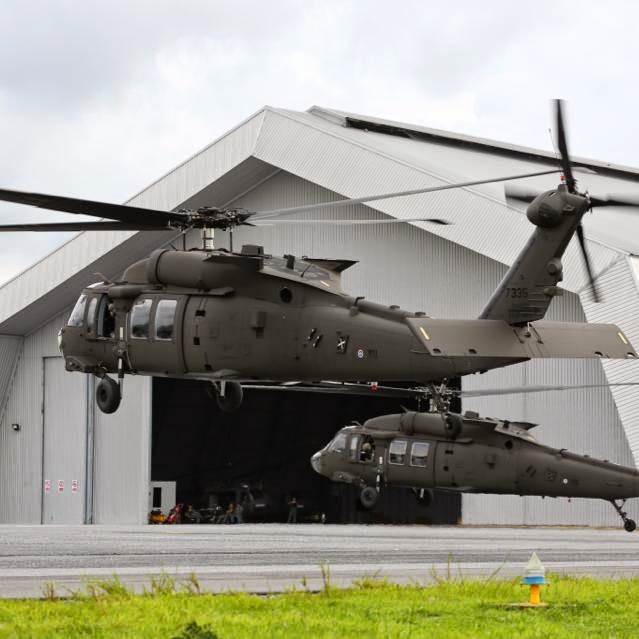Mastering the Skies: UH 60 Helicopter Maintenance List
Mastering the Skies: UH 60 Helicopter Maintenance List
Blog Article
Recognizing the Mechanics and Engineering Behind Uh 60 Helicopters
The UH-60 helicopter, typically called the Black Hawk, stands as a peak of modern-day rotorcraft modern technology, personifying a blend of durable engineering and complex auto mechanics. From its creation to its current iterations, the evolution of this aircraft showcases a combination of advancement and usefulness. As we peel off back the layers of the UH-60's style, a world of detailed systems and careful design comes to light. Understanding the auto mechanics and engineering behind this versatile aircraft unveils a realm where precision fulfills power, and where each component plays a critical duty in achieving flight.
Background of UH-60 Helicopters
The background of UH-60 helicopters traces back to the late 1970s when the USA Army looked for a flexible and advanced energy helicopter to change its aging fleet. In response to this need, the Sikorsky Airplane Company created the UH-60 Black Hawk helicopter. Presented in 1979, the UH-60 promptly became a staple in military procedures due to its remarkable abilities.
The UH-60 was created to master a selection of goals, consisting of troop transport, medical emptying, electronic war, and unique procedures. Its ability to adapt to various roles made it a beneficial asset to the united state Army and other military forces all over the world
Over the years, the UH-60 platform has undertaken numerous upgrades and variants to enhance its efficiency and equal developing mission requirements. These helicopters have actually seen comprehensive service in conflicts such as the Gulf War, Afghanistan, and Iraq, showcasing their reliability and convenience in varied functional atmospheres. The UH-60's rich history is a testament to its long-lasting heritage as a leading utility helicopter.

Engine and Power Solutions
Making use of innovative propulsion modern technology, UH-60 helicopters are equipped with advanced engine and power systems to make certain ideal performance and integrity in a range of operational circumstances. The UH-60, commonly called the Black Hawk, is powered by two General Electric T700-GE-701D engines, each with the ability of providing up to 1,940 shaft horse power. These turboshaft engines supply the required thrust for the helicopter to lug out its missions effectively, including army transport, medical evacuation, and combat support.

Blades System and The Rules Of Aerodynamics
How do the blades system and aerodynamics of UH-60 helicopters contribute to their operational efficiency and flight capabilities? The blades system of the UH-60 helicopter plays an important duty in supplying lift and propulsion.
Aerodynamics also play an essential role in the efficiency of UH-60 helicopters. The structured fuselage and blades blade style lower drag, permitting the helicopter to attain greater speeds and much better fuel performance. The wind resistant design of the UH-60 also adds to its capacity to run in varied ecological problems, consisting of hot temperatures and high altitudes.
Avionics and Flight Control Systems

In Read Full Report its detailed control with the blades system and aerodynamics of UH-60 helicopters, the avionics and flight control systems form an essential network of technologies forming the airplane's functional capabilities. Avionics include the digital systems used for interaction, navigating, and keeping an eye on various airplane features. In the UH-60, these systems consist of electronic screens, interaction radios, general practitioner navigating, weather condition radar, and auto-pilot systems. These avionics systems supply essential information to the pilots, improving situational recognition and guaranteeing reliable and secure procedure of the helicopter.
The trip control systems of the UH-60 are accountable for translating the pilot's inputs into the suitable modifications to the rotor system, making sure steady trip and ability to move. These systems contain hydraulic actuators, servos, and computers that function together to control the tail and primary rotors, in addition to various other trip control surface areas. By specifically taking care of the helicopter's flight characteristics, these systems enable pilots to do a variety of goals, from transportation and search-and-rescue to battle procedures, with accuracy and confidence.
Function and Applications in Aviation
Avionics systems in UH-60 helicopters incorporate a range of electronic systems that aid in navigating, communication, monitoring, and controlling various aircraft features. These systems include electronic screens, autopilot systems, communication radios, GPS navigating equipment, and climate radar. In addition, these systems include security functions such as autopilot settings, surface awareness cautioning systems, and stability augmentation systems he has a good point to enhance the overall security and operational capacities of the UH-60 helicopters in numerous objectives, consisting of troop transport, medical discharge, search and rescue, and aerial firefighting.
Verdict
In verdict, the UH-60 helicopter is a functional aircraft with a rich background and progressed engineering. Its engine and power systems, blades system, the rules of aerodynamics, avionics, and trip control systems all function together to make it a trusted and efficient equipment.
In its detailed coordination with the rotor system and aerodynamics of UH-60 helicopters, the avionics and trip control systems create an essential network of technologies forming the aircraft's operational capacities.The trip control systems of the UH-60 are responsible for converting the pilot's inputs right into the proper modifications to the rotor system, guaranteeing steady flight and ability to move. Avionics systems in UH-60 helicopters include a variety of digital systems that aid in navigation, interaction, surveillance, and controlling numerous aircraft features. Furthermore, these systems incorporate safety visit the website functions such as auto-pilot settings, terrain awareness cautioning systems, and stability augmentation systems to enhance the overall safety and functional abilities of the UH-60 helicopters in different goals, including troop transport, clinical emptying, search and rescue, and aerial firefighting.
Its engine and power systems, blades system, aerodynamics, avionics, and flight control systems all work with each other to make it a reliable and dependable equipment.
Report this page